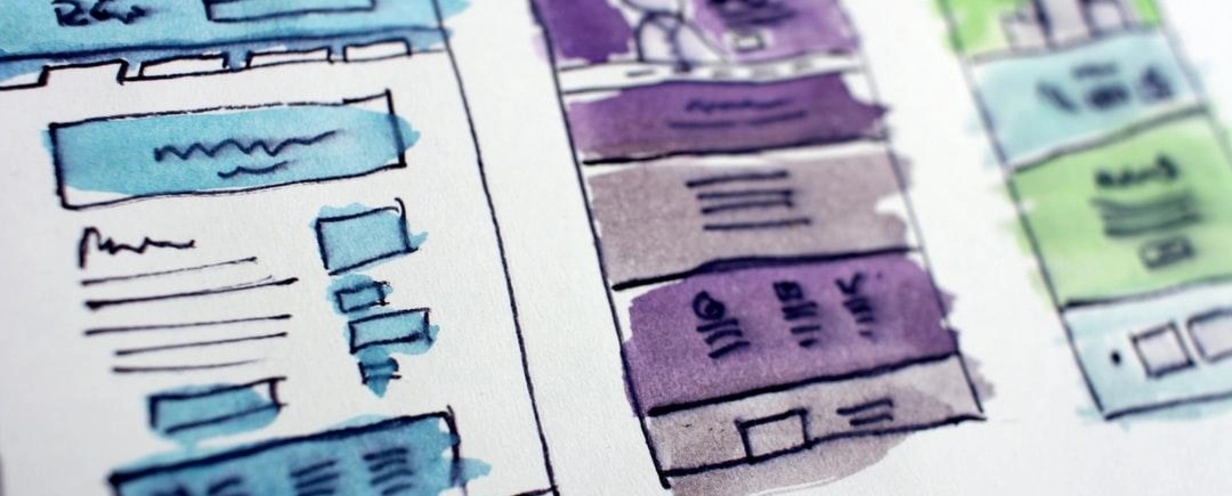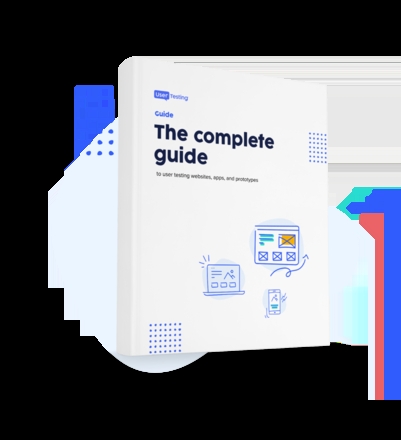
UX and UI design for mobile app: Enhancing user experience and user interface

To improve the appearance of your mobile app and align it with what your audience is looking for, you'll need user experience (UX) and user interface (UI) design. These two components of app development create a seamless experience that is visually appealing and easy to use.
UX and UI design for mobile apps
UX design is about creating a relevant and meaningful experience for the user. It can include layout, navigation, prompts and interactions, voice recognition, and more. UX design emphasizes user interaction. All design choices are based on what the user is looking for and how they use the app.
UI design focuses on how the user interacts with the app. It includes buttons, blocks, controls, menus, pop-ups, and other elements that make up your app's appearance. UX and UI are user-focused, meaning user feedback guides mobile app development and improvements.
The importance of UX and UI design in mobile applications
UX and UI design work together to ensure users have the best possible experience when using your mobile app. When your app is easy to use and visually pleasing, users are more likely to enjoy their experience and continue using your app. An intuitive layout and attractive visuals invite users to explore your app and its features, leading to increased usage and, ultimately, higher revenue.
UX and UI strategies: Best practices for mobile app design
You'll need to follow UX and UI best practices to create an app that stands out from the competition.
Simplify navigation
Users value ease of use above almost everything else in mobile apps, so much so that 97% of them cited it as their most important quality when considering apps. If they can't quickly and effortlessly find what they're looking for, they may abandon your app and move on to a competitor.
Simplified navigation also reduces the learning curve for new users. The less time and effort users spend figuring out how to navigate your app, the more time they have to use it.
Make your interface invisible
An invisible interface is an underrated strategy in mobile app design. The primary goal of an invisible interface is to make the interaction between the user and the app as natural and frictionless as possible.
You want your app to feel like a seamless part of their life. Think of the Netflix Autoplay feature, where new videos play automatically without the user lifting a finger.
Signs your app is succeeding in this area include increased time on the app, lower user churn, and higher conversions.
Put the user first
This approach, often called user-centric design, emphasizes understanding users' needs, behaviors, and expectations before making design decisions. You can use surveys, feedback forms, interviews, and other methods to understand better how your users interact with the app.
By prioritizing users from the start, you can identify and address potential issues or pain points before they become a problem. This will use less resources than a trial-and-error approach and mitigate risk
Allow one hand control
As mobile devices continue to grow in size, they become more challenging to use with two hands. Just over 75% of users polled by Android Authority said that phones are too big. The time for designing phone apps that required two hands has passed. To compete in today's market, think about how to design your app for one-handed control.
Designing your app for one-handed use makes it more accessible and easy to use when commuting, carrying other objects, or multitasking. An accessible app can be marketed to a broader audience.
Reduce clutter
Clutter refers to any element in your app that doesn't serve a purpose or contribute to the user's goals and can significantly impact the user experience. A cluttered app interface is visually unappealing, confuses users, and makes navigation difficult, leading to frustration and customer churn.
Clutter also slows users down. Unnecessary elements distract users from their intended tasks and increase their time to complete them. This reduces your app's efficiency and overall user satisfaction.
Improve readability
Readability refers to how easy it is for users to understand your app's content. Font choice, text size, line spacing, color contrast, and layout affect how your users read and process your copy. If users can easily read and understand the information in your app, they're less likely to search for another app that’s easier to use and easier on the eyes.
To improve readability, use bigger fonts for headings and shorter paragraphs to reduce user fatigue. Put your site through online readability tools that offer suggested improvements for the design.
Expert tips for mobile app UX and UI design success
Below are some industry tips that can help improve your design efficiency.
Use design grids
Design grids are nothing new, but modern UX and UI teams often overlook this foundational step when designing an app. These tools provide a structure for organizing visual elements on the page by creating temporary grid lines that help organize visual elements.
Design grids make it easy to space, align, and position elements across any screen to create a cohesive look. This tool helps with team collaboration as well. When everyone uses the same grid system, it becomes much easier for stakeholders to understand designs and work together more efficiently.
Choose colors carefully
Color is not just about aesthetics. It plays a significant role in functionality and user experience. Contrasting colors make the text easier to read, while similar colors blend elements together. You can also use bright, bold colors that draw the user's eye to important information or call-to-action buttons.
However, it's also important to remember that color perception varies widely among individuals, especially those with color vision deficiencies. Always ensure your color choices are accessible to all users. Tools and guidelines, like the Web Content Accessibility Guidelines, help check the contrast ratio and ensure your app is accessible to as many users as possible.
Stick with consistent style sheets
Style sheets establish consistent visual language and interaction patterns across your app. A UI/UX designer uses them to quickly create shortcuts for styling various app elements, but they also significantly affect your users.
When similar elements and interactions are consistent in appearance and behavior, it makes the app intuitive and easy to navigate. Users clearly understand how to use the app and what to expect from future iterations.
Monitor app loading speeds
Bounce rates increase 32% when the load takes 1-3 seconds. In today's world of instant gratification, users expect instant delivery when loading UI/UX design for mobile apps. Long loading times lead to users losing patience and switching to a similar app to accomplish their tasks.
Monitoring app loading speeds will allow you to spot underlying issues, such as inefficient code or server problems, that affect your app's overall performance.
Creating an intuitive UI for a seamless user experience
Use the steps below to create a UI experience customers will love:
- Focus on user needs: Understand the real-world use cases, problems that need solving, and goals users hope to accomplish with your app. This information should drive all UI decisions.
- Make it easy: Every UI element should focus on helping users quickly understand how they can interact with the product and achieve their goals. More straightforward navigation means more people will be able to use your app.
- Test and refine: Get feedback from users to understand how they interact with your mobile product pages. Use this data to make refinements so that the UI becomes more intuitive over time.
Importance of consistency in mobile app design
When apps are consistent in their design, users don't have to think much to use them. In the technology industry, this is known as an "intuitive design." Interacting with this kind of design is easy and fast.
Consistency also helps build trust and reliability with users. Users feel more confident navigating an app when they know what to expect. They can predict how the app will respond to their actions, which creates a sense of control and trust.
Consistency will streamline the design and development process, too. With predefined style guides and components, designers, and developers can work more efficiently, ensuring the final product maintains a uniform appearance and behavior.
Tools for mobile app usability testing
Once you have a minimum viable product for your app, you'll need to test it with real users using mobile usability testing tools. Many platforms are available for testing purposes.
The Human Insight Platform
Using the Human Insight Platform, see users as they test and engage with products, designs, apps, processes, concepts, or brands. The platform provides easy access to participants through the global Participant Network, Custom Network, Invite Network, or customer communities.
The test builder is drag-and-drop, so your team will easily capture contextualized customer perspectives in hours. There is also a template gallery and machine learning-powered test distribution engine to speed up the process.
The Human Insight Platform utilizes data visualization, ML-generated instant insight, and collaboration tools to make sense of the data.
EnjoyHQ
EnjoyHQ from UserTesting is a library of customer insights logged and used by all stakeholders. The platform makes it easy for your organization to centralize customer feedback in one location. All team members can share the data to increase collaboration, democratize insights, and boost productivity.
You can pull data from mobile testing, desktop testing, and other forms of online testing while keeping it all secure. The built-in security and compliance protect enterprise-level organizations when managing GDPR, FSQS, SOC2, and Type 2 certifications.
UserZoom
UserZoom from UserTesting makes it easier for organizations that need quick results.
The on-the-go design also makes it easier to access from any device, including cell phones or tablets. You'll get access to data from various sources instead of getting one type of feedback.
What makes the platform powerful is the ability to customize features to your needs. You can target specific demographics or customize the task list to get more relevant data.
Mobile app UI design trends
To stay competitive in your market, you must use contemporary design trends that make your app look relevant and modern. Below are a few design choices used in some of the world's top apps.
Chatbots
Organizations that want to offer immediate customer service are leaning on chatbots. They offer a direct and interactive form of communication between users and the app. They also provide instant responses, making it easier for users to get information or carry out tasks without leaving the app.
When combined with AI technology, apps can provide personalized experiences and track customer behavior over time, allowing you to give an even better customer experience. They'll also handle multiple requests simultaneously at a volume human customer service representatives can't match.
Passwordless login
Instead of filling out a password and username every time a user wants to sign into an app, passwordless logins provide a secure and faster option. Some apps use fingerprints to identify a user, and others may send a one-time code to the phone number on file for the account.
Users often reuse passwords across multiple platforms, making them vulnerable to attacks if one platform is compromised. With passwordless login, the risk is eliminated. Not only is this method safer, but it also increases conversions. The simpler and quicker login process reduces user friction, which can lead to higher registration and engagement rates.
Social media elements
Allowing users to quickly make a comment or share a particular achievement across several platforms with one app will increase user engagement. They receive more positive interactions as they engage with a broader audience and will use the app more often.
Emojis are a universal social media element that help humanize digital interactions. They allow users to express emotions and nuances that might be hard to convey through text alone. This makes communication more engaging and personal, enhancing the user experience.
Emojis are also universally recognized symbols. They often transcend language barriers, making them an effective tool for communication in global apps with diverse user bases. They're easy to understand, contributing to a more intuitive and user-friendly interface.
Micro-interactions
Focusing on micro-interactions during the UX and UI design process helps you meet customer demands on the minute level. Review every button design the user clicks on or every notification sound and imagine how the user responds and what they think of these micro-interactions.
You can use micro-interactions to educate the user on using the app. Small visual clues like icons or animations will cue the user to the right actions, and they'll have an easier time using the app.
Artificial intelligence
Most organizations are implementing artificial intelligence in their app design and app-building processes. AI collects and organizes massive amounts of data and synthesizes results, providing insights into how users interact with your app. Because AI can sift through data quickly, it can help you spot patterns and trends faster and adapt your design to meet user needs better.
Utilizing AI while developing an app also streamlines operations for your organization. AI tools can automate graphic design creations, copywriting, editing videos, transcribing audio, and more. Identifying organizational needs and aligning them with the benefits of an AI tool will help you get the most out of your investment.
Check out UserTesting’s AI vision.
Better mobile apps with UX and UI design
UX and UI design help build better mobile apps by using user feedback to make operational decisions. By focusing on critical elements like navigation, clutter, and readability, UX and UI design builds a seamless user experience that will increase engagement, lower churn, and increase productivity.
UserTesting can help you improve your mobile app by providing platforms like the Human Insight platform, UserZoom, and EnjoyHQ to put customer feedback in your hands. Talk with our experts today and learn how to get the app feedback you need to take over the market.
Related reading: 3 mobile UX design principles from apps we love

Get started with experience research
Everything you need to know to effectively plan, conduct, and analyze remote experience research.





